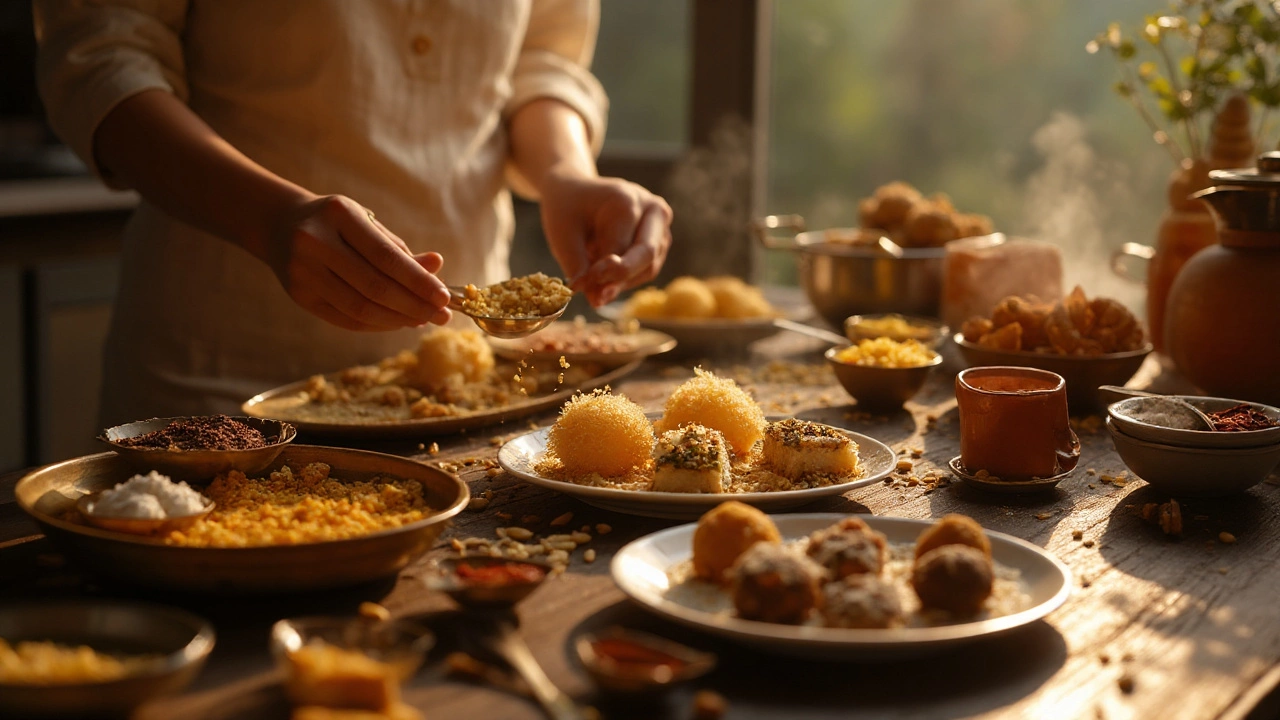Jaggery vs Sugar: What’s the Real Difference?
When you reach for a sweetener, you probably think of white sugar. But jaggery, the brown, unrefined sugar popular in South India, is showing up on grocery shelves more often. So, is jaggery a healthier swap or just a fancy name for sugar? Let’s break it down in plain English.
How They’re Made
Refined sugar starts as sugarcane or beet juice that’s boiled, filtered, and crystallized. The process strips away molasses, leaving pure sucrose. Jaggery, on the other hand, is made by simply boiling the same juice until it thickens and solidifies. No heavy filtering, no bleaching—just the natural brown color and all the minerals that come with it.
Nutrition at a Glance
One tablespoon of regular sugar gives you about 16 grams of pure carbohydrate and zero vitamins. Jaggery contains a similar amount of carbs, but it also provides trace amounts of iron, potassium, magnesium, and calcium. Those minerals aren’t enough to replace a multivitamin, but they do add a tiny nutritional edge.
Both sweeteners raise blood glucose, but jaggree’s lower glycemic index means the spike is a bit slower. That’s helpful for people who watch their blood sugar, though it’s not a free pass to over‑indulge.
Flavor and Cooking Uses
Flavor is where jaggery really shines. It brings a subtle caramel, earthy note that sugar lacks. In dishes like rasam, chutney, or traditional sweets, jaggery adds depth without needing extra spices. If you’re baking a cake, sugar’s neutral sweetness and fine crystals give a lighter crumb. Jaggery can make baked goods denser and darker, which some people love and others avoid.
Because jaggery melts slower, it’s great for making syrups or caramelizing vegetables. Just remember to keep the heat moderate—high heat can turn the natural flavors bitter.
Health Talk
Both sweeteners add calories, so moderation is key. The biggest health win with jaggery is the presence of antioxidants from the molasses. Those compounds may help combat oxidative stress, but the amounts are small.
If you’re managing weight, swapping sugar for jaggery won’t magically trim pounds. The calorie count is almost the same. However, if you’re looking for a sweetener with a richer taste and a few extra minerals, jaggery is a decent alternative.
Bottom Line
Jaggery isn’t a miracle food, but it’s a less processed option with a unique flavor profile and a handful of minerals. Use it when you want that caramel‑like depth in curries, chutneys, or traditional desserts. Stick with regular sugar for delicate baking where a light texture matters. Either way, keep the portion size small—your taste buds will thank you, and your waistline will stay happier.
Which Indian Sweet Is Healthy? Best Choices, Portions, and Smart Swaps
Wondering which Indian sweet is healthy? See the best picks, portion sizes, nutrition table, and quick healthier recipes. Simple, evidence-backed, and practical.
